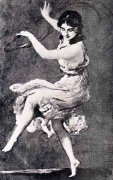 It's getting colder in Chicago. The sun is gone before four-thirty in the afternoon. The wind is sharper and whips around the corners of tall buildings like an eroding blast of dry, gritty canyon air, only frozen. And somehow, while hot desert air seems to prompt a slow, tired, cleansing exhale, the cold Midwestern winter air causes a gasp, and a tension, that brings more of the harsh environment inside our bodies. It's long wool coat, thick leather gloves, and long scarf weather.
It's getting colder in Chicago. The sun is gone before four-thirty in the afternoon. The wind is sharper and whips around the corners of tall buildings like an eroding blast of dry, gritty canyon air, only frozen. And somehow, while hot desert air seems to prompt a slow, tired, cleansing exhale, the cold Midwestern winter air causes a gasp, and a tension, that brings more of the harsh environment inside our bodies. It's long wool coat, thick leather gloves, and long scarf weather.For years now, every time I wrap a long scarf around my neck, I think about how Isadora Duncan died.
 Tonight after work I stepped onto a very crowded train with a long black scarf half-knotted around my neck. I slid my leather bag off my shoulder so I could hold it by my side, allowing more room for other riders. This movement tossed one length of the thick fabric over my left shoulder. As my fellow passengers and I shuffled our feet and exhaled (as if this would free the spaces between us), I looked over my shoulder at my reflection in the smudgy windows of the train doors, which were closing inches behind me. I saw my tired eyes, my reddened cheeks, my windblown hair - and my scarf, as the length of fraying tassle at the end was snapped into the rubbery gap between the two sliding metal doors. I was caught.
Tonight after work I stepped onto a very crowded train with a long black scarf half-knotted around my neck. I slid my leather bag off my shoulder so I could hold it by my side, allowing more room for other riders. This movement tossed one length of the thick fabric over my left shoulder. As my fellow passengers and I shuffled our feet and exhaled (as if this would free the spaces between us), I looked over my shoulder at my reflection in the smudgy windows of the train doors, which were closing inches behind me. I saw my tired eyes, my reddened cheeks, my windblown hair - and my scarf, as the length of fraying tassle at the end was snapped into the rubbery gap between the two sliding metal doors. I was caught. Isadora Duncan was born in 1878 in San Francisco, the daughter of a poet and a pianist/music teacher. She is considered the mother of modern dance, and pioneered a natural, interpretive style free of the formal constrictions of ballet. About her art, she said "The only dance masters I could have were Jean-Jacques Rousseau, Walt Whitman and Nietzsche."
Isadora Duncan was born in 1878 in San Francisco, the daughter of a poet and a pianist/music teacher. She is considered the mother of modern dance, and pioneered a natural, interpretive style free of the formal constrictions of ballet. About her art, she said "The only dance masters I could have were Jean-Jacques Rousseau, Walt Whitman and Nietzsche."She was bold and unconventional in her art and life, and is considered an early feminist. She had two children (one with Singer sewing machine heir Paris Singer) without the benefit of marriage, about which she said: "Any intelligent woman who reads the marriage contract, and then goes into it, deserves all the consequences."
 All through her life, Isadora had a strong desire to nurture children, and educate them about the arts, culture, freeing physical movement, and their spiritual natures, as well as foundational academics. She opened her first school in Germany in 1904, and paid for the tuition and basic needs for many hand-chosen children from very poor families. In her own words: "I do not teach children, I give them joy."
All through her life, Isadora had a strong desire to nurture children, and educate them about the arts, culture, freeing physical movement, and their spiritual natures, as well as foundational academics. She opened her first school in Germany in 1904, and paid for the tuition and basic needs for many hand-chosen children from very poor families. In her own words: "I do not teach children, I give them joy." In September 1927 she climbed into a Bugatti convertible in Nice, France, with her friend Ivan Falchetto. Her beautiful trademark long scarf, nearly ankle-length, flowed in the wind, and caught in the axle of the car as it began to speed down the road. Isadora was jerked violently from the automobile and dragged for several yards before anyone realized what had happened. She died instantly of a broken neck.
In September 1927 she climbed into a Bugatti convertible in Nice, France, with her friend Ivan Falchetto. Her beautiful trademark long scarf, nearly ankle-length, flowed in the wind, and caught in the axle of the car as it began to speed down the road. Isadora was jerked violently from the automobile and dragged for several yards before anyone realized what had happened. She died instantly of a broken neck.She also said: "What one has not experienced, one will never understand in print."

1 comment:
Neato mosquito.
Post a Comment